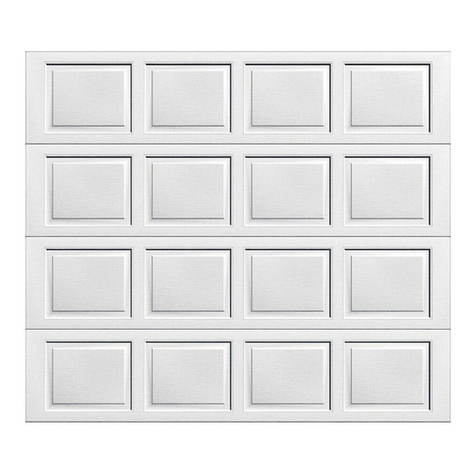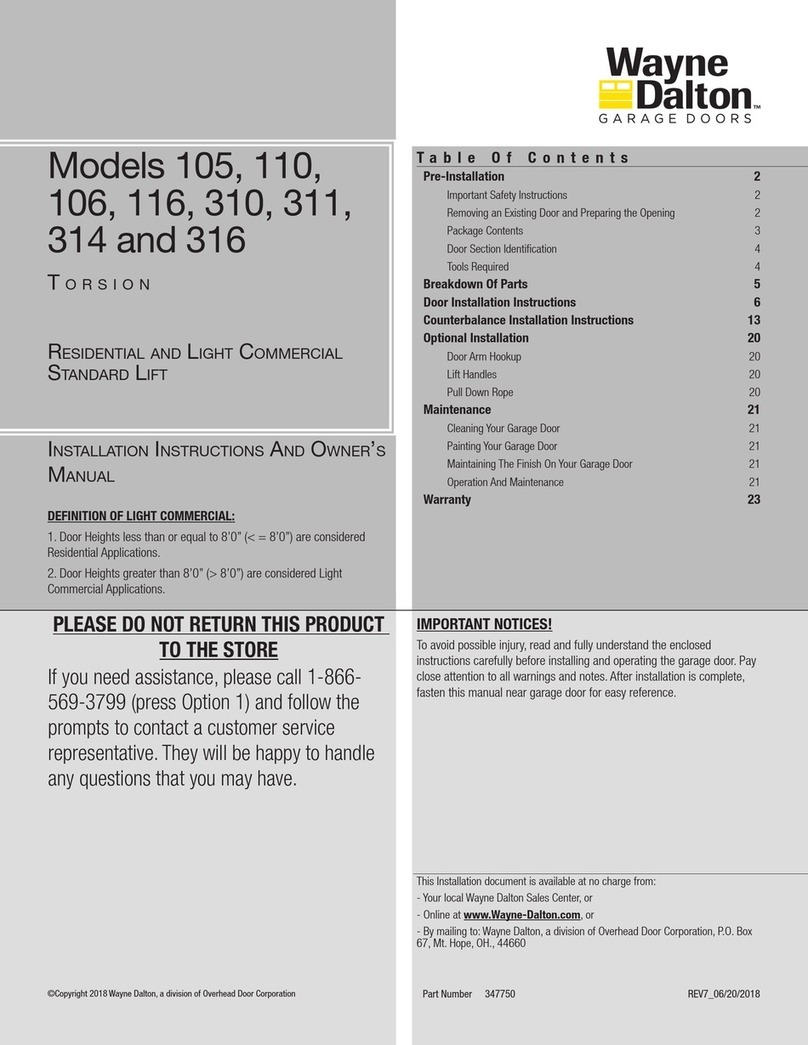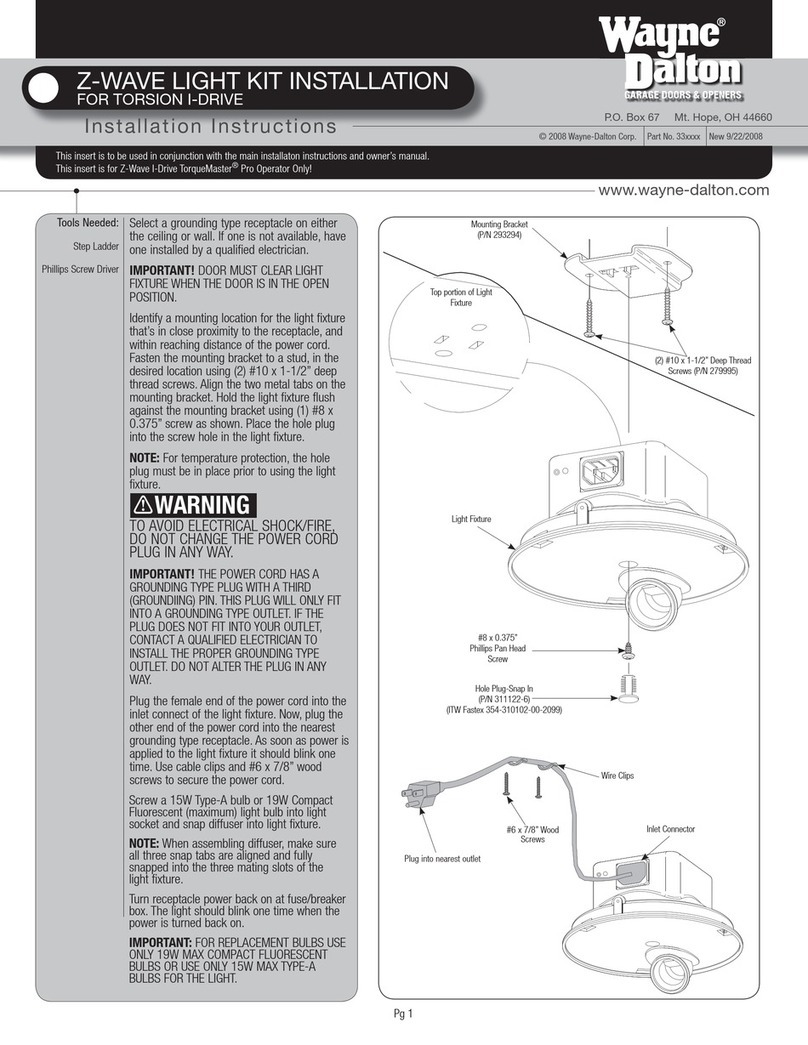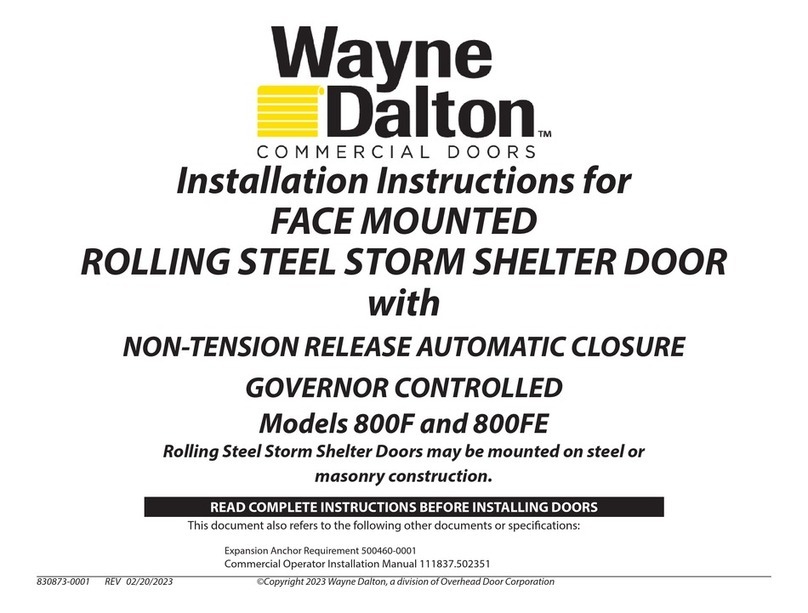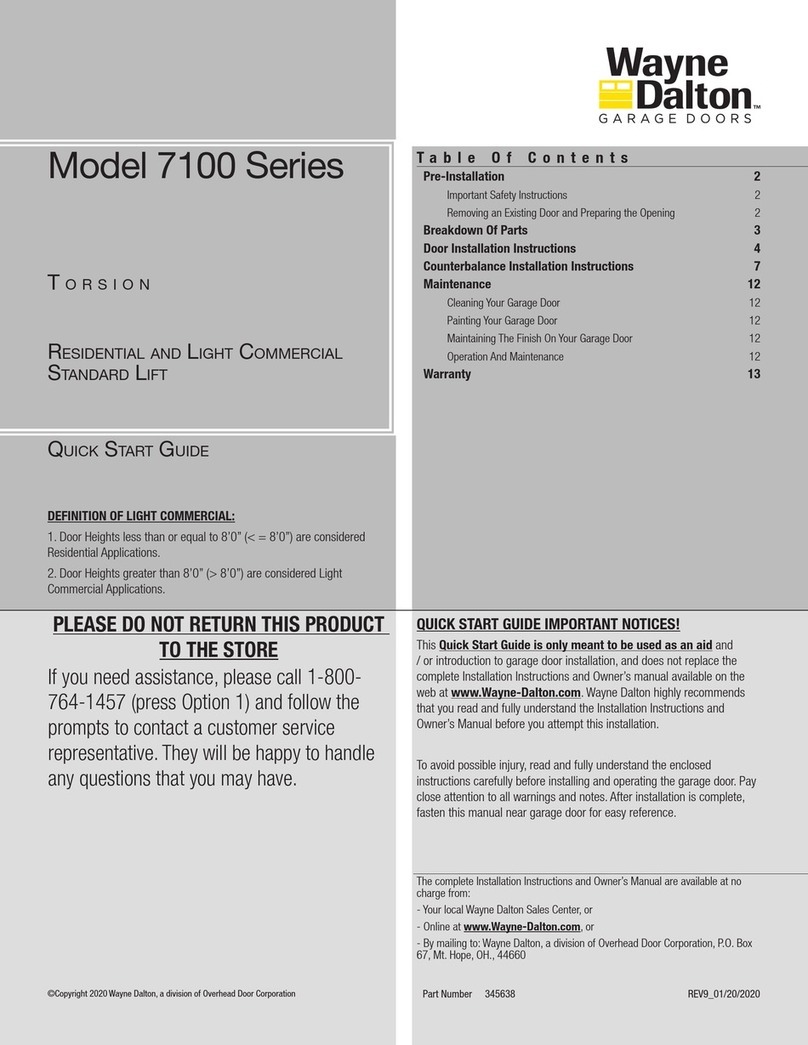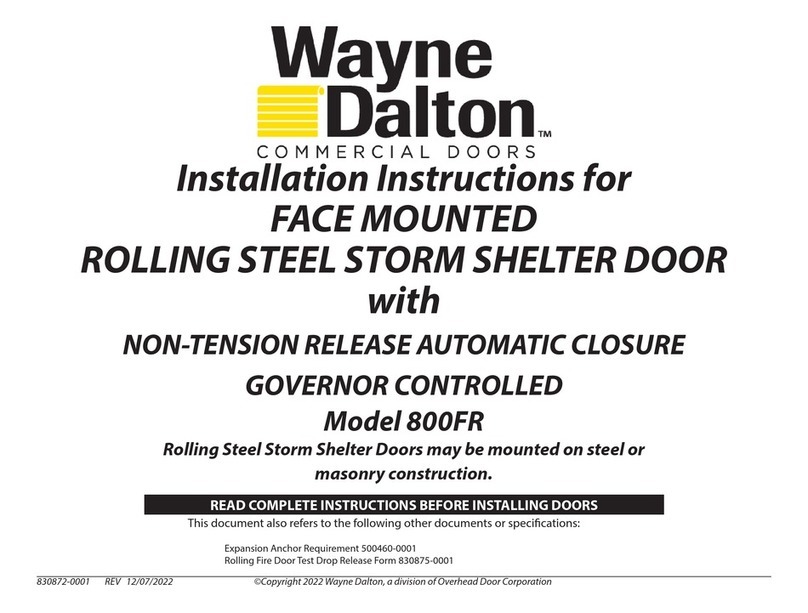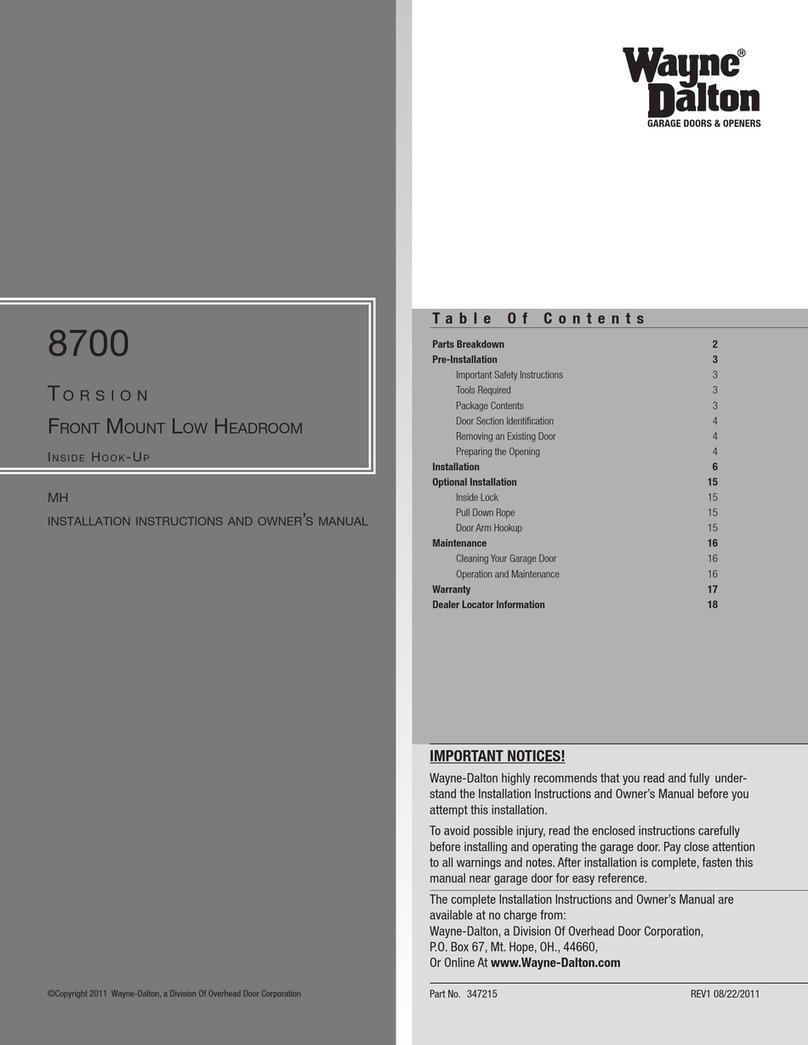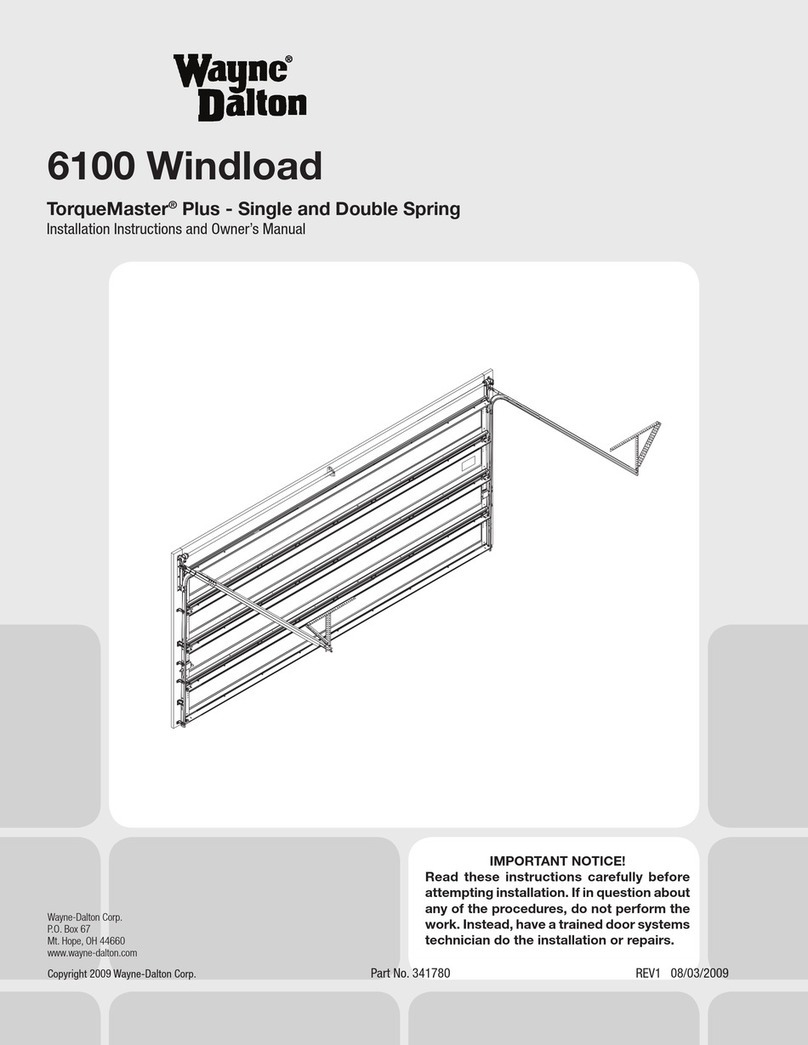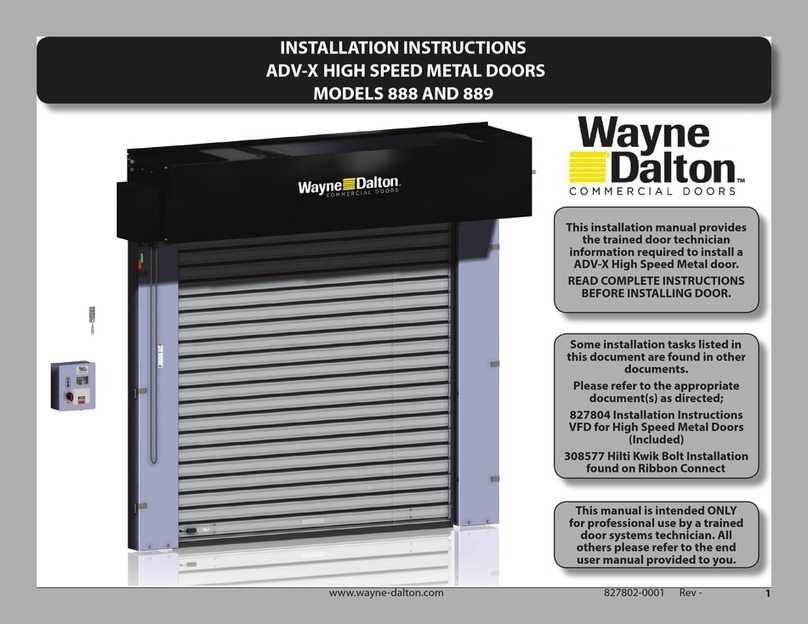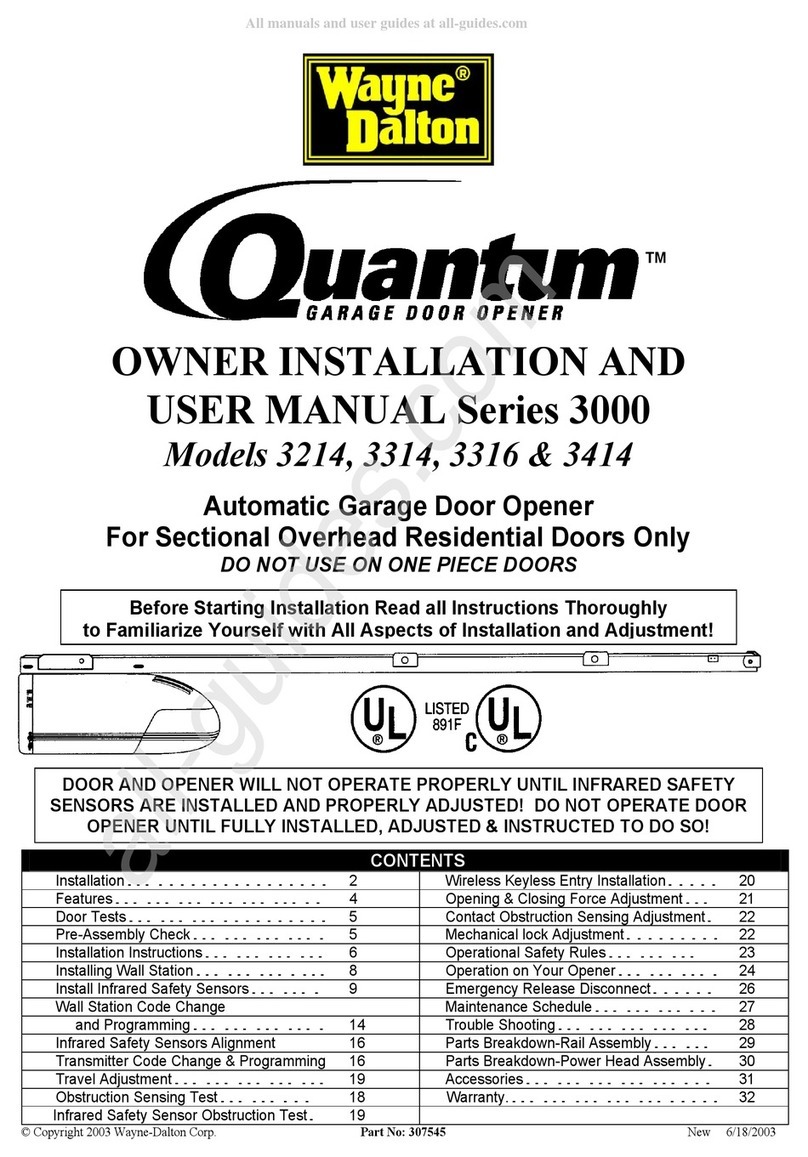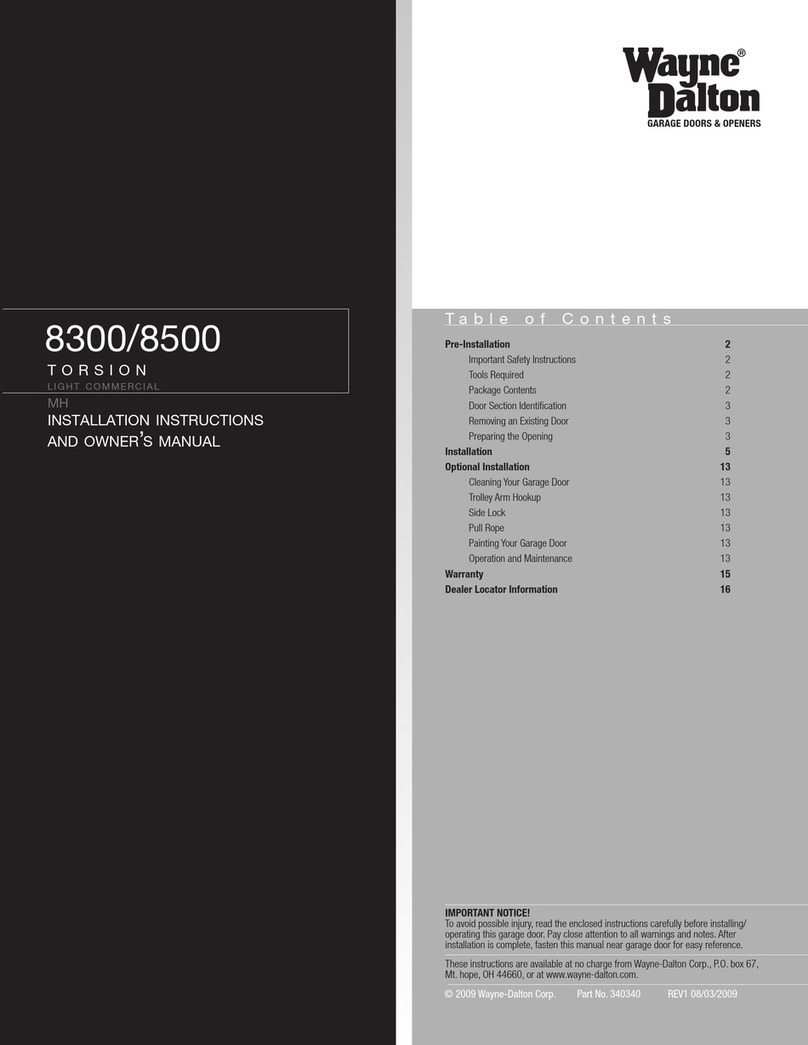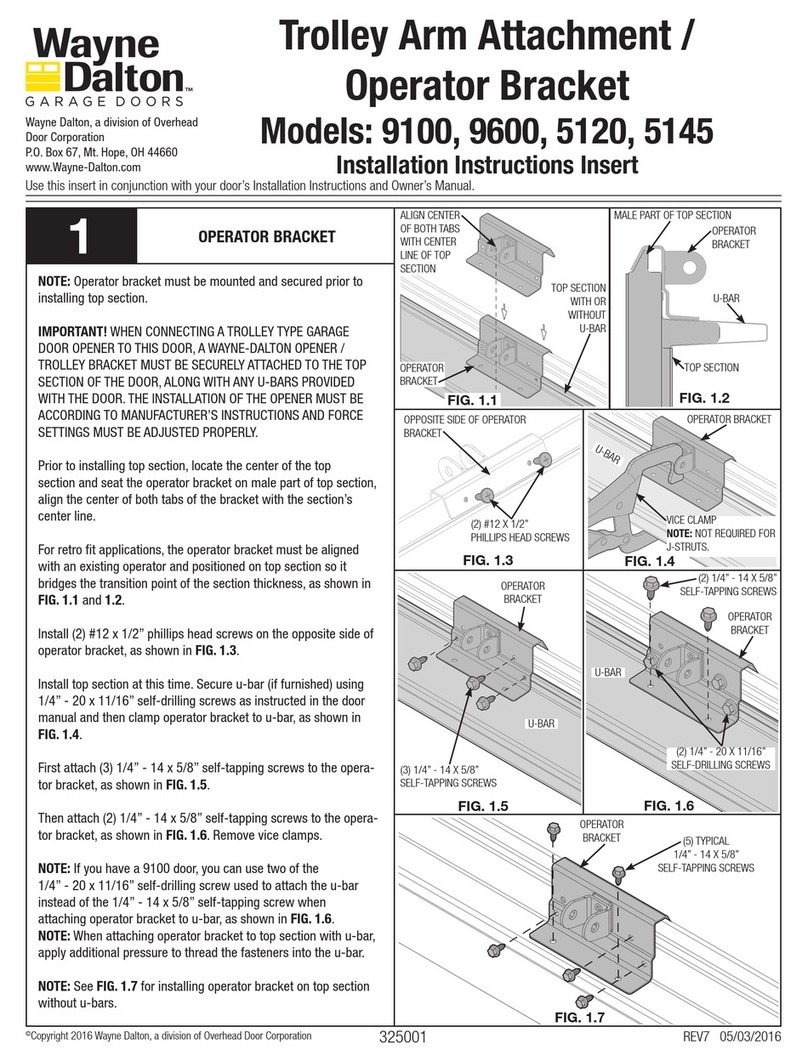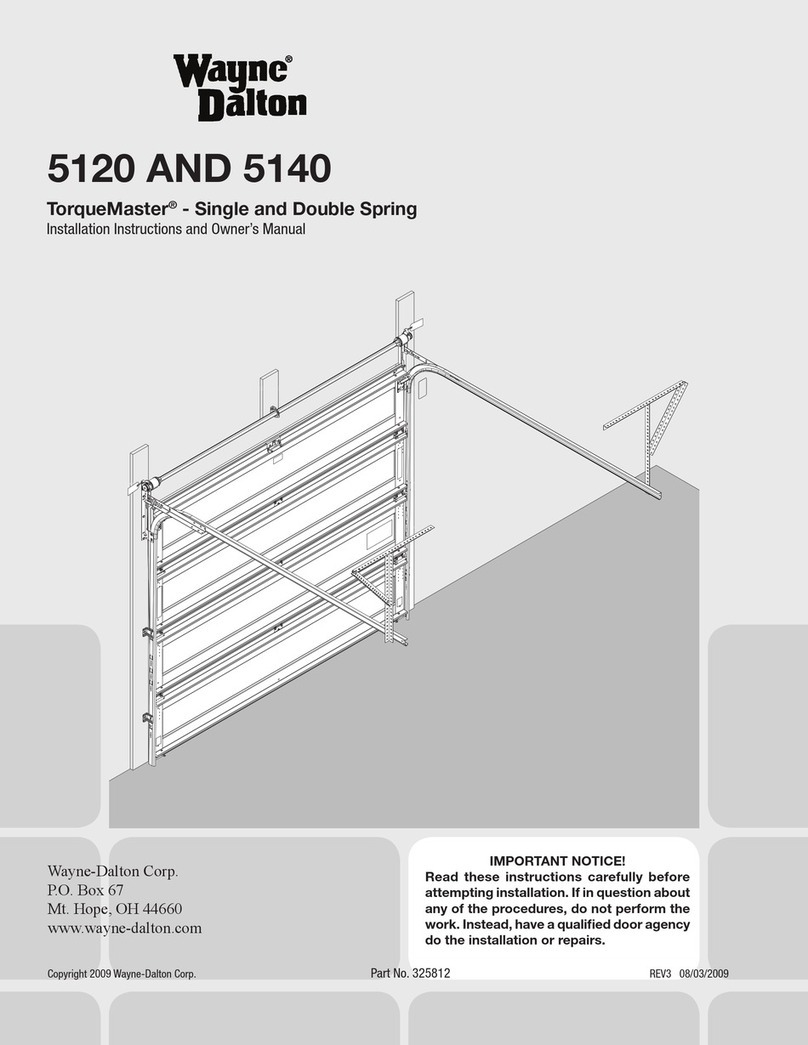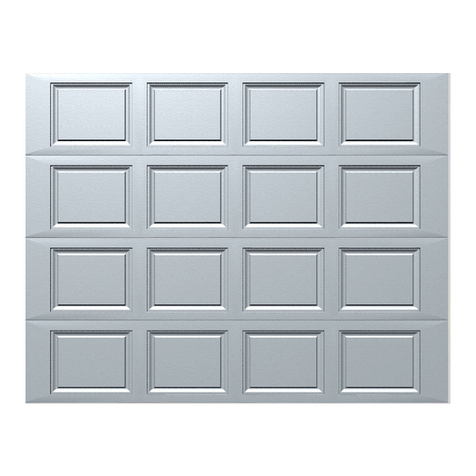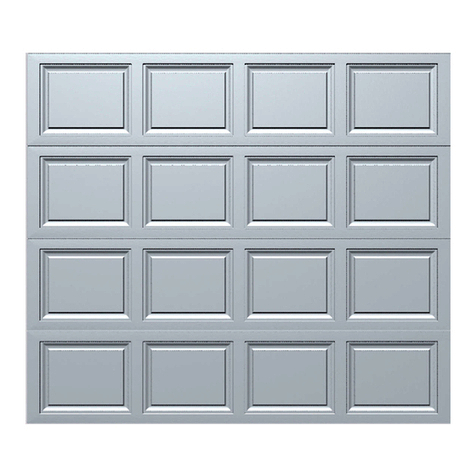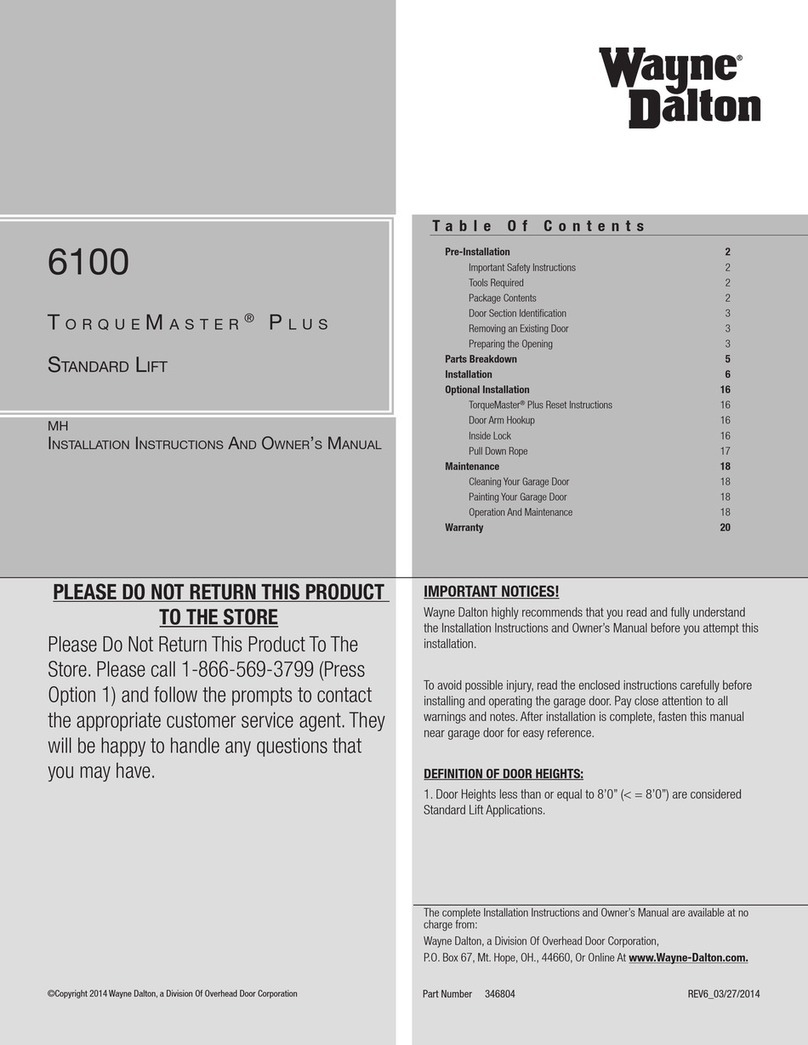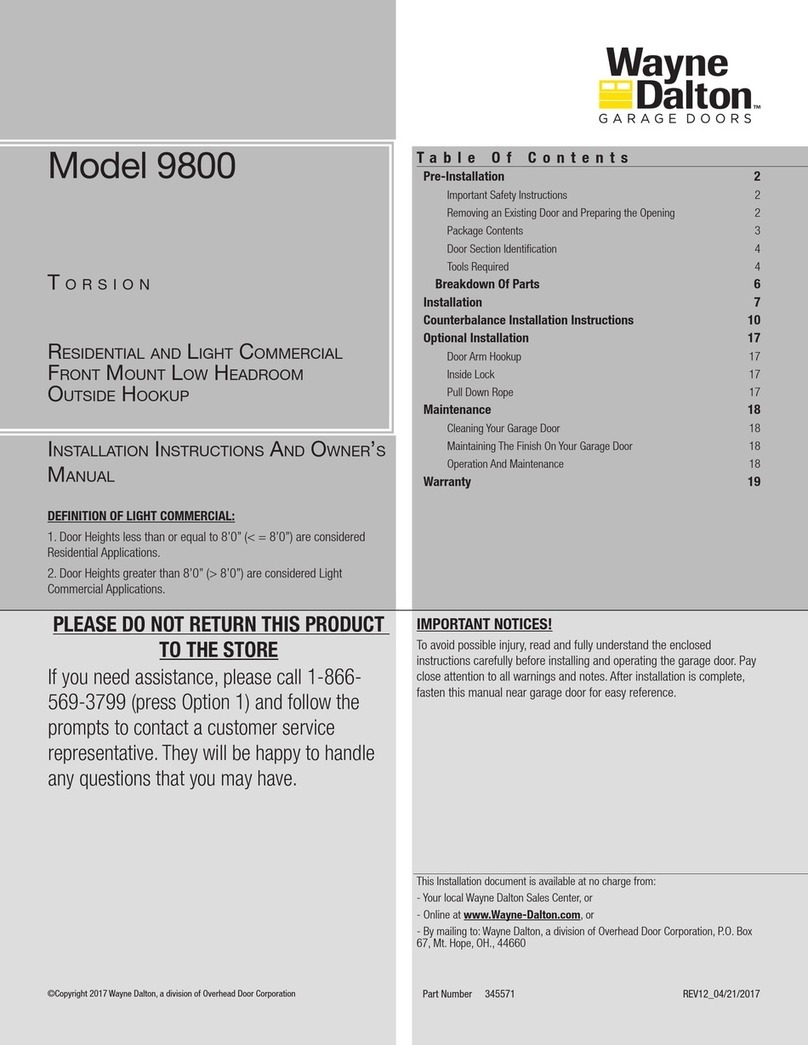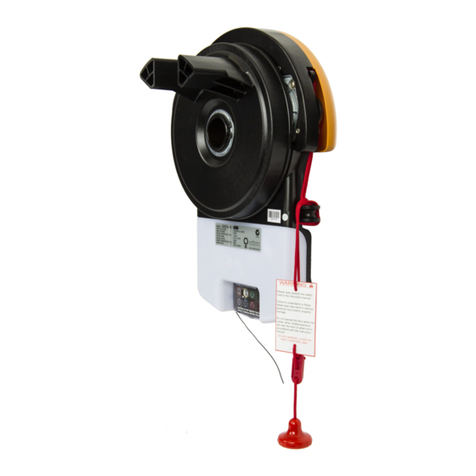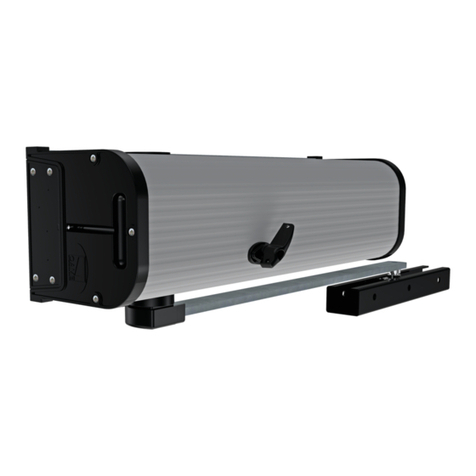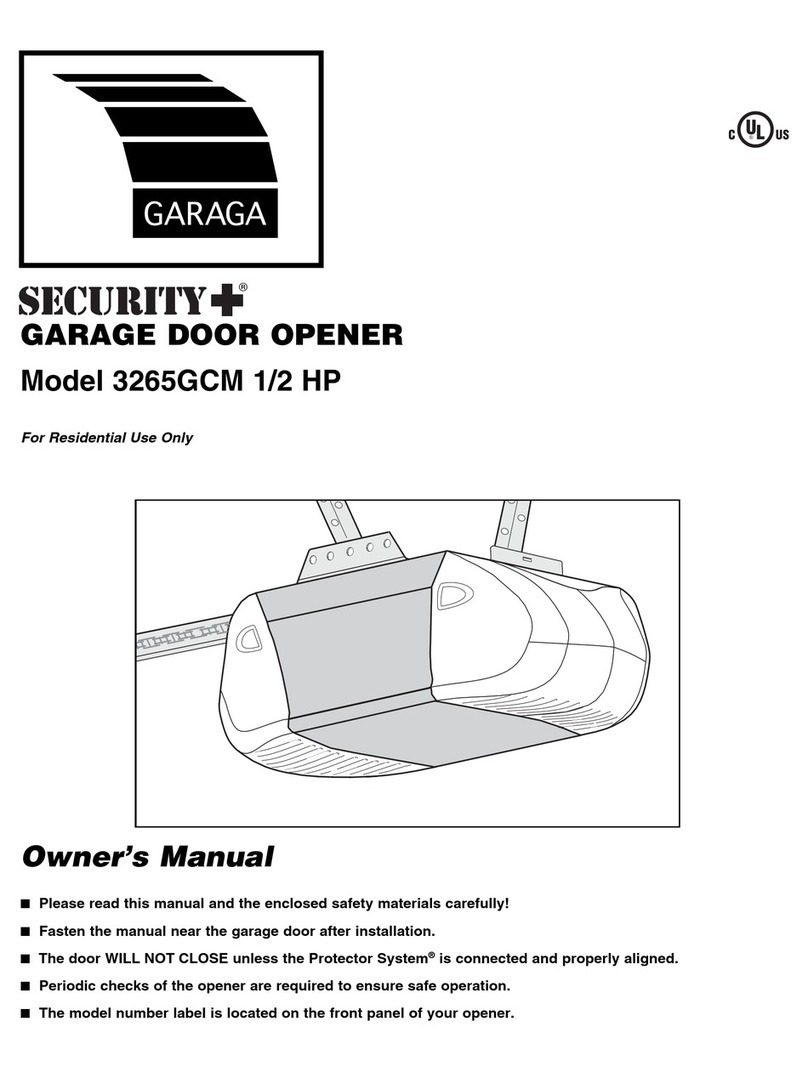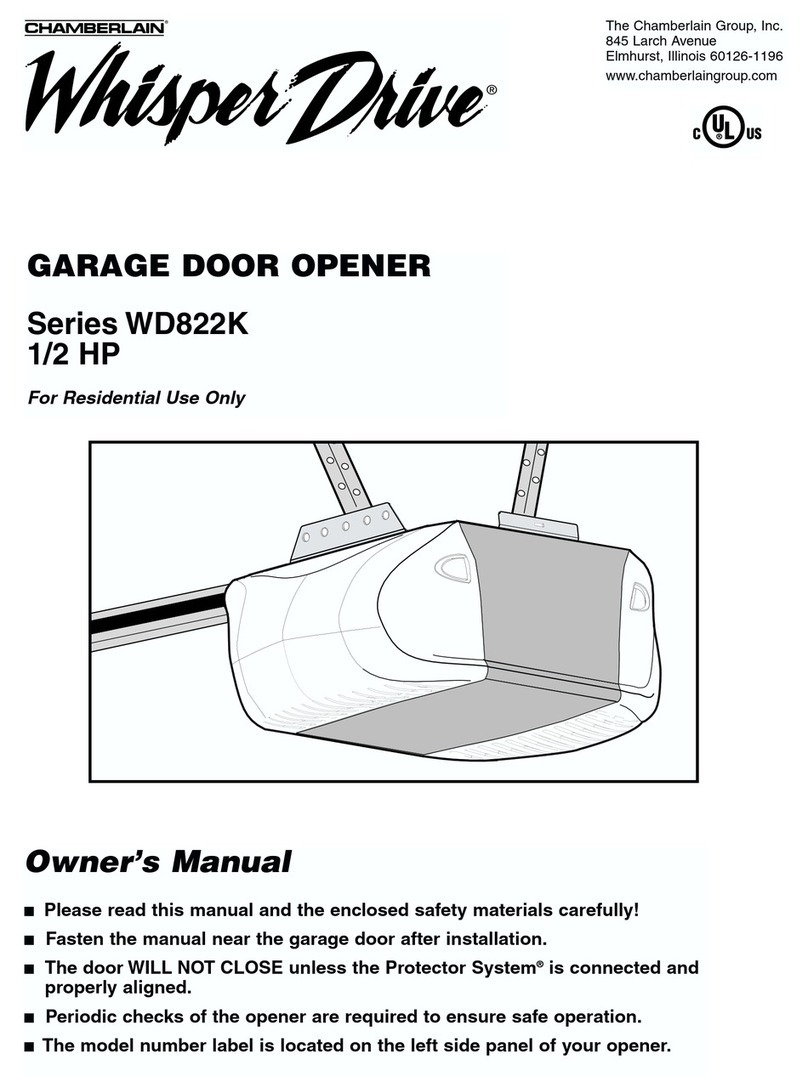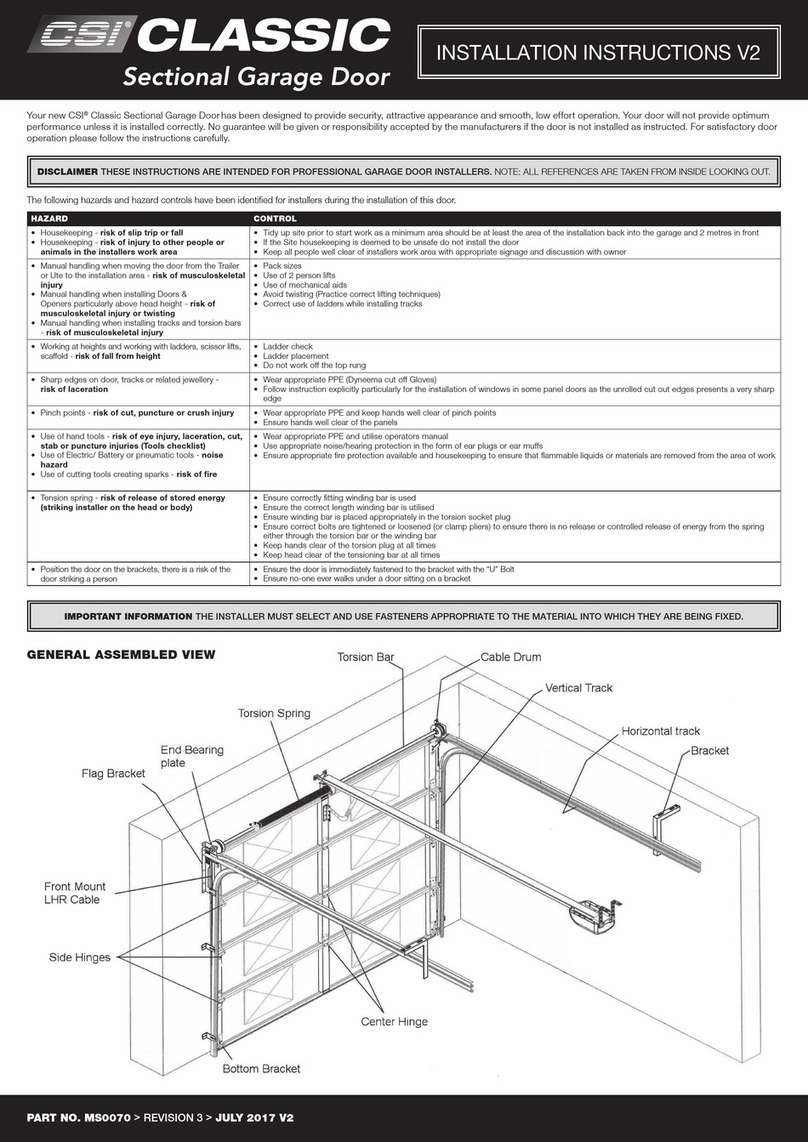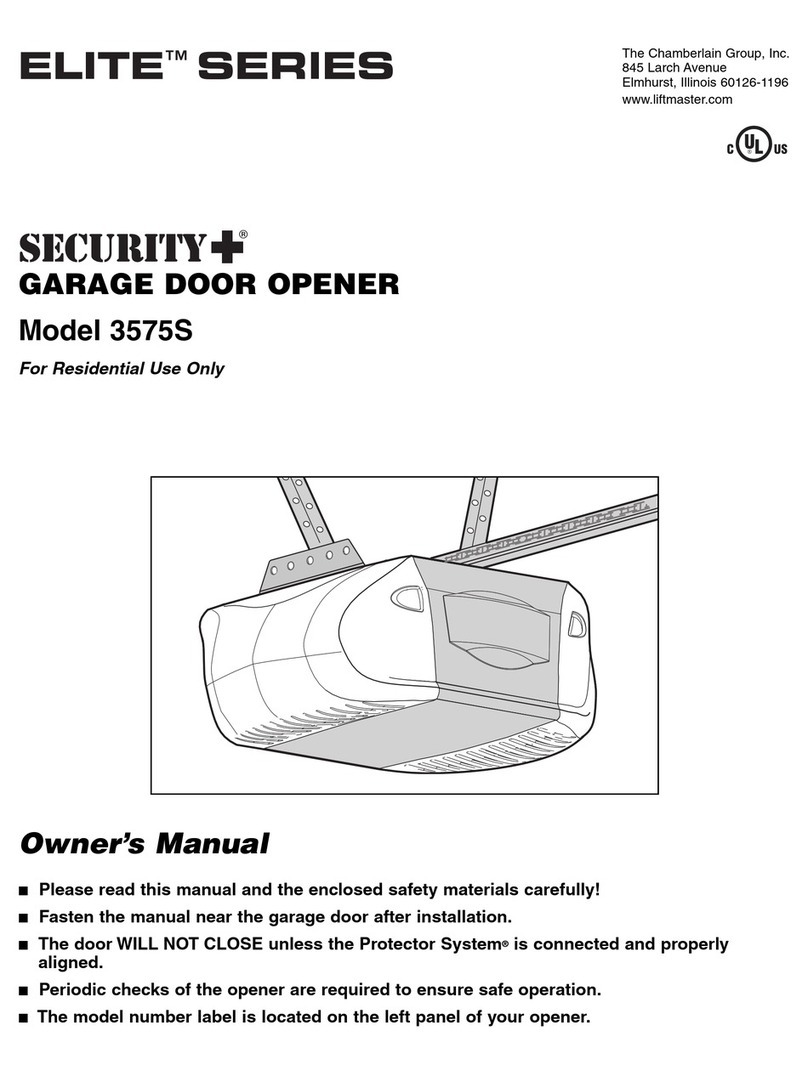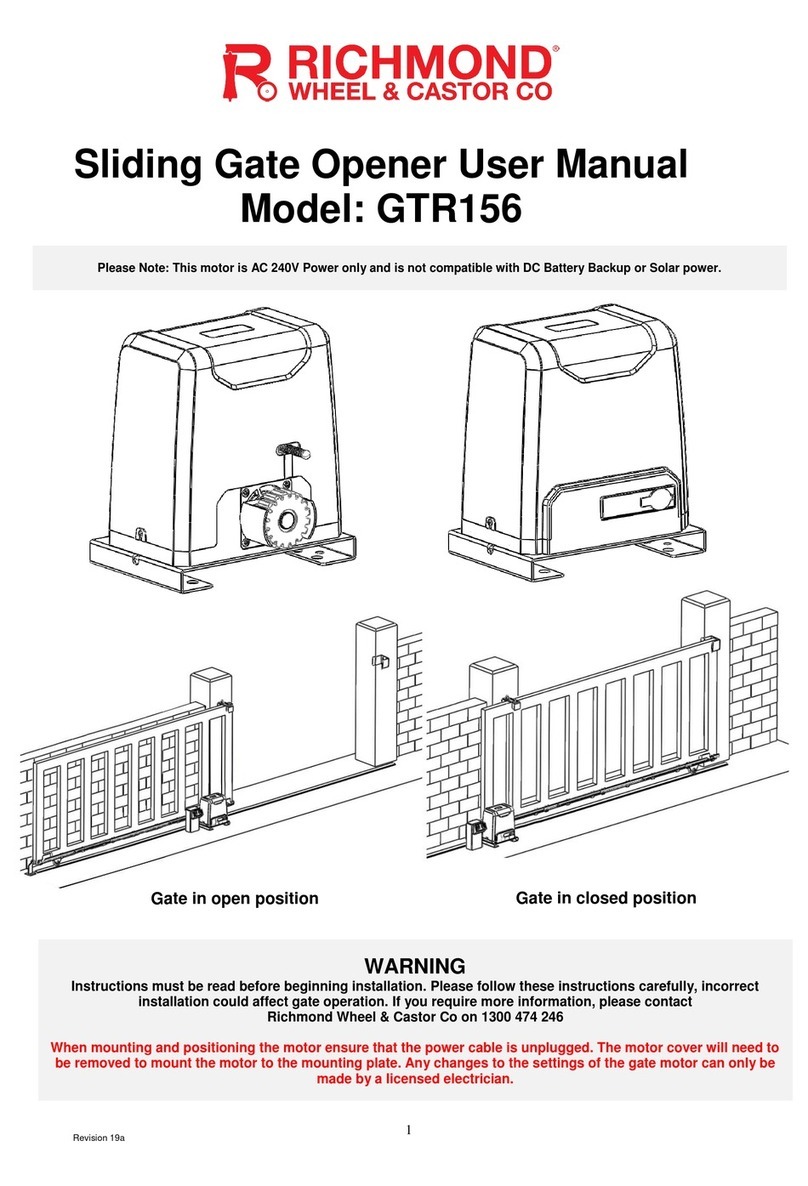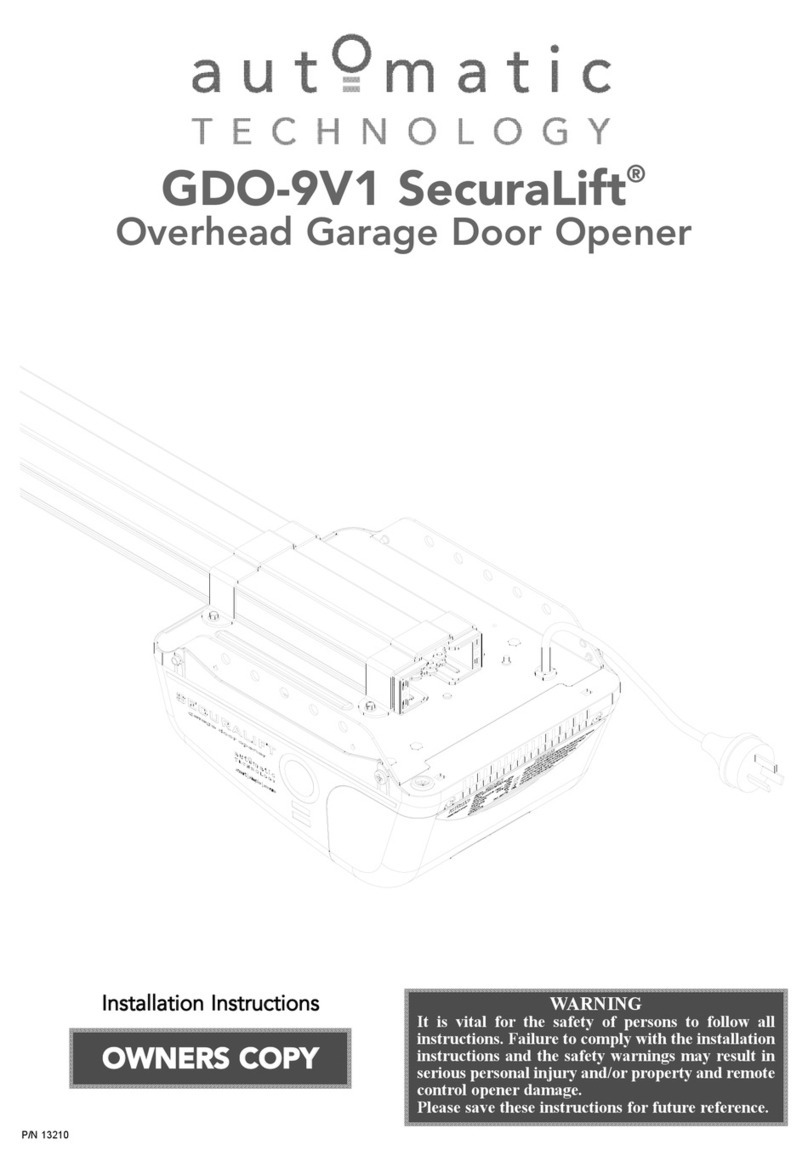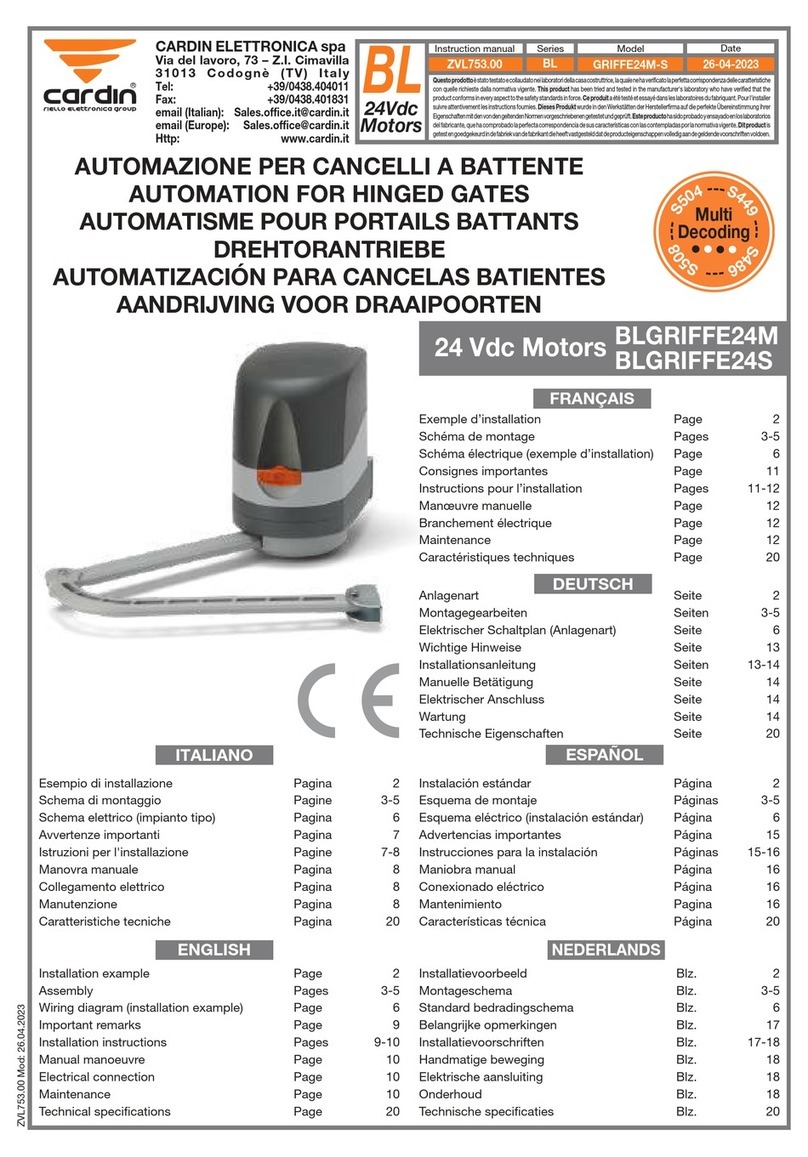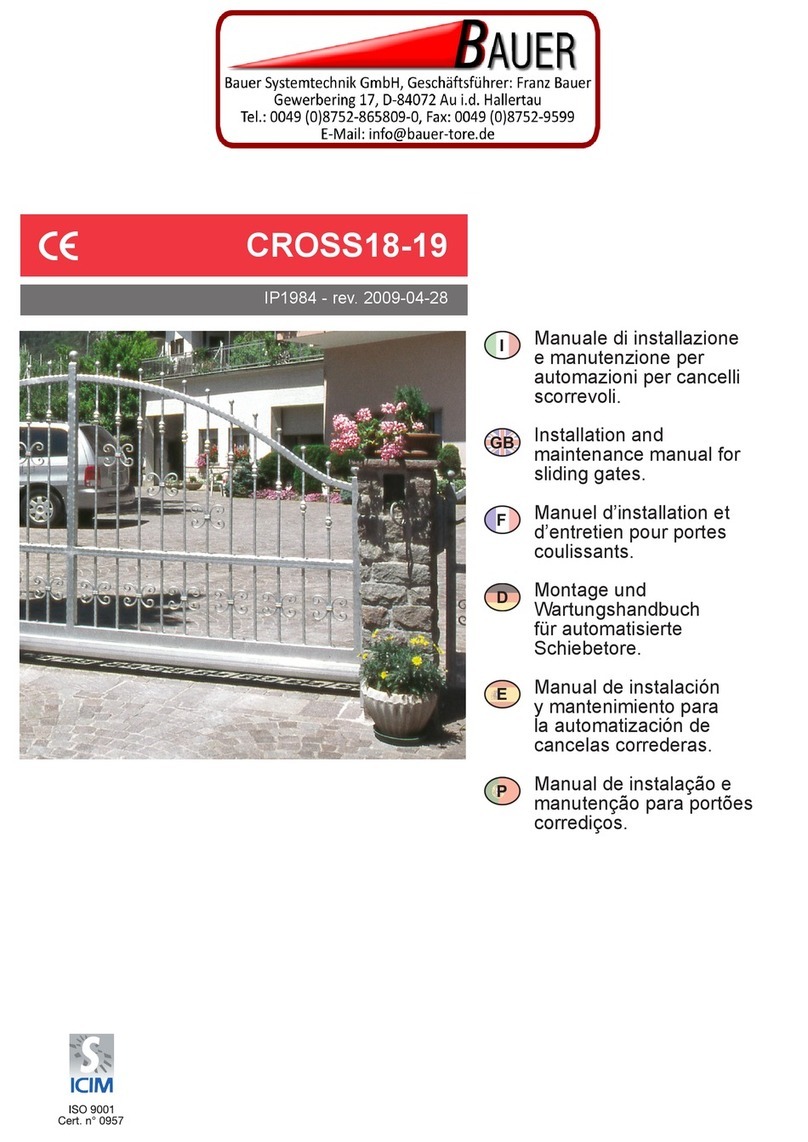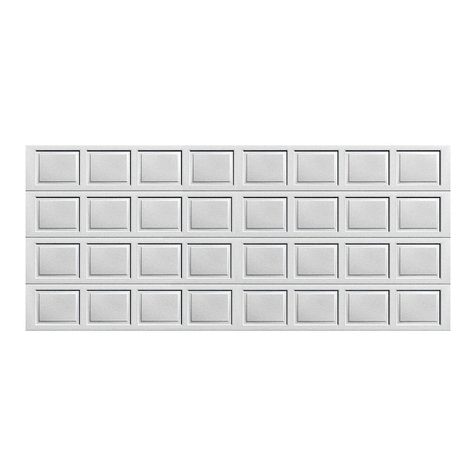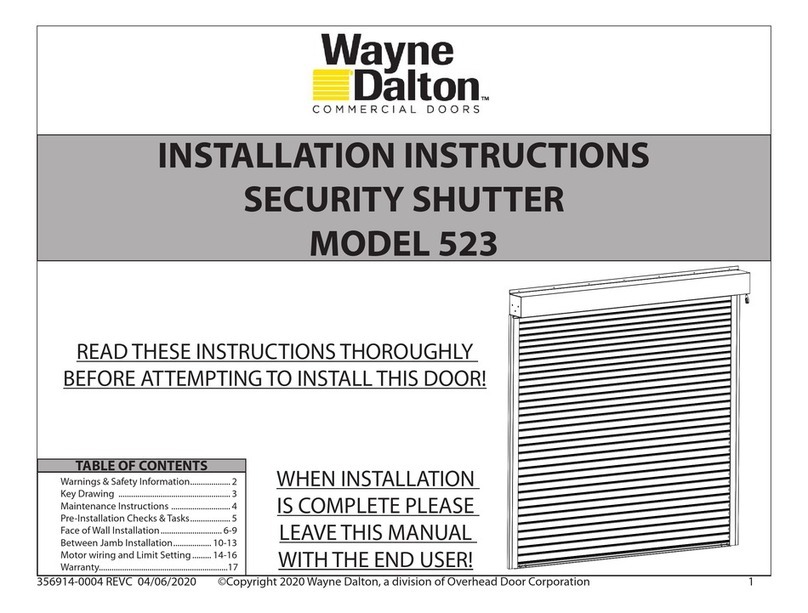
INSTALLATION
Before installing your door, be certain that you have read and followed all of the instruc-
tions covered in the pre-installation section of this manual. Failure to do so may result in an
improperly installed door.
NOTE: Reference TDS 160 for general garage door terminology at www.dasma.com.
Section Sizing
Tools Required: Power drill, Phillips head screwdriver, Saw horses, Pencil, Saw,
Tape measure, Safety glasses, Leather gloves
1
NOTE: Refer to door section identification, located in the pre-installation section of this
manual. Refer to Package Contents / Parts Breakdown, to determine which sections you’ve
received.
NOTE: Not all doors will need to be cut down. If your door sections are the appropriate width
for your opening, skip this step.
NOTE: End caps are marked right and left hand.
WARNING
IT IS RECOMMENDED THAT A BREATHING APPARATUS BE WORN
WHILE CUTTING DOWN THE FOAMED SECTIONS. FAILURE TO WEAR A
BREATHING APPARATUS COULD RESULT IN A SEVERE INJURY.
WARNING
IT IS RECOMMENDED THAT GLOVES BE WORN WHILE HANDLING THE
SECTIONS AND WORKING AROUND EXPOSED SHARP METAL EDGES.
FAILURE TO WEAR GLOVES COULD RESULT IN A SEVERE INJURY.
NOTE: A metal cutting finishing circular saw blade should be used when cutting the section
width down to the appropriate width.
NOTE: When re-installing the endcaps back onto the section, you should use a metal, acrylic
or epoxy adhesive, so the endcaps will adhere to the section surface.
Lay the section face down onto saw horses.
IMPORTANT: IT IS HIGHLY RECOMMENDED TO PROTECT THE OUTSIDE FINISH WHEN LAY-
ING THE SECTION ONTO THE SAW HORSES WITH CARPET OR EQUIVALENT MATERIAL TO
PREVENT THE SECTION FROM BEING SCRATCHED OR DAMAGED.
Using a phillips head screwdriver, remove but retain all screws from both the left hand and
the right hand end caps. Gently slide the end caps off of the section and set them aside.
Now, locate the center of the section.
NOTE: Typical section cut down is (Opening width minus 1/8”, divided by 2).
Measure from the center of the section outward and mark a vertical line onto the section
surface. On the opposite side, measure from the center of the section outward and mark
another vertical line onto the section surface.
WARNING
BEFORE CUTTING THE SECTION DOWN TO THE DESIRED WIDTH, ENSURE
YOU ARE CUTTING BOTH SIDES EQUALLY. FAILURE TO DO SO COULD
RESULT IN SECTION PANELING NOT LINING UP VERTICALLY.
Using a circular saw carefully cut section to the desired width. Starting on left hand side,
apply some adhesive to the inside section surface and position the left hand end cap onto
the left hand side of the section, as shown. While holding the end cap in position, re-use the
screws to secure the end cap to the section. Repeat for the right hand side and then repeat
the same process for the other sections.
endcap
Adhesive
Screws
Inside section
surface
Right hand
endcap
Endcap
Saw horses
Flag Angles
Tools Required: Safety glasses, Leather gloves
2
NOTE: If you have riveted tracks, skip this step.
NOTE: Flag angles are right and left handed.
Hand tighten the left hand flag angle to the left hand vertical track using (2) 1/4” - 20 x
9/16” track bolts and (2) 1/4” - 20 flange hex nuts. Repeat for other side. Flange nuts will be
secured after flag angle spacing is completed in step, Top Section.
1/4”- 20 x 9/16”
Track bolts
Flag angle
Vertical
track
1/4”-20
Flange hex nuts
Jamb Brackets
Tools Required: Safety glasses, Leather gloves
3
NOTE: If you have riveted tracks, skip this step.
NOTE: The bottom jamb bracket is always the shortest bracket, while the center jamb
bracket(s) is the next tallest. The top jamb bracket is always the tallest bracket.
To attach the bottom jamb bracket, locate lower hole of the hole/ slot pattern of the bottom
hole set on the vertical track. Align the slot in the jamb bracket with the lower hole of the
hole/ slot pattern. Secure jamb bracket using (1) 1/4” - 20 x 9/16” track bolt and (1) 1/4” -
20 flange hex nut. Repeat for other side.
To attach the top jamb bracket, locate lower hole of the hole/ slot pattern of the top hole set
on the vertical track. Align the slot in the jamb bracket with the lower hole of the hole/ slot
pattern. Secure jamb bracket using (1) 1/4” - 20 x 9/16” track bolt and (1) 1/4” - 20 flange
hex nut. Repeat for other side.
Next, attach the center jamb bracket(s) in the same manner as the others remembering to
ensure the shortest jamb bracket is always below the next tallest jamb bracket. Repeat for
other center jamb brackets, then repeat for other side.
Bottom hole set Center hole set(s) Top hole set
track
Jamb
bracket
1/4”- 20 x 9/16”
Track bolt
1/4”- 20
Flange hex nut Jamb bracket
in place
Lower hole of
hole/ slot pattern
Bottom Corner Bracket and Track Rollers
Tools Required: Power drill, 7/16” Socket driver, Tape measure, Saw horses,
Safety glasses, Leather gloves
4
NOTE: Refer to door section identification, located in the pre-installation section of this
manual. Refer to Package Contents / Parts Breakdown, to determine which bottom corner
brackets you received.
IMPORTANT: IF THE DOOR WILL BE EXPOSED TO A SIGNIFICANT AMOUNT OF ROAD SALT,
PAINT THE BARE GALVANIZED BOTTOM WEATHER STEEL RETAINER TO INHIBIT RUSTING.
WARNING
FAILURE TO ENSURE TIGHT FIT OF CABLE LOOP OVER THE PINS COULD
RESULT IN COUNTERBALANCE LIFT CABLE COMING OFF THE PIN,
ALLOWING THE DOOR TO FALL, POSSIBLY RESULTING IN SEVERE OR
FATAL INJURY.
Using the illustrations below, determine which bottom corner bracket came with you door.
FOR DOORS WITH BOTTOM CORNER BRACKETS SHOWN IN TOP ILLUSTRATION:
Starting on the left hand side, attach left hand bottom corner bracket to the left corner of
the bottom section, making sure it is seated to the edges of the end cap, using 1/4” - 20 x
11/16” RED HEAD self drilling screws. Repeat for other side. Uncoil the counterbalance lift
cables. Starting on the left hand side, place the left hand cable loop on the left hand milford
pin of the bottom corner bracket. Insert a short stem track roller with a roller spacer into the
bottom corner bracket. Repeat for other side.
FOR DOORS WITH BOTTOM CORNER BRACKETS SHOWN IN BOTTOM ILLUSTRA-
TIONS: Uncoil the counterbalance lift cables. Place the cable loop into position between the
6

